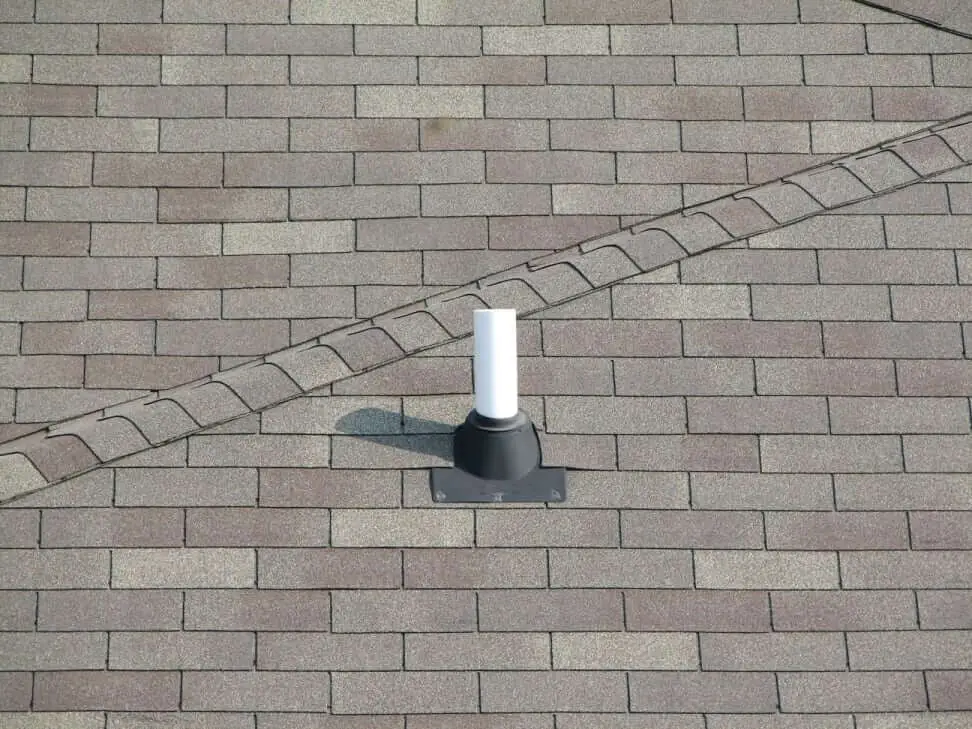
Have you ever wondered about those pipes sticking out of your roof? You might be surprised to learn they’re plumbing vent pipes, an essential part of your home’s sewer system. As such, certain drainage issues could stem from problems with your vent pipes. Learn more here before calling in the pros.
What Does a Plumbing Vent Do?
Plumbing vent pipes, also called vent stacks, are crucial for a free-flowing drainage system. They allow air to enter the drainpipes so a vacuum doesn’t form. Without this feature, you might face slow or clogged drains. Vent stacks also release smelly sewer gases, which pose no risk when safely vented outside. This function is crucial for keeping your indoor air safe and odor-free.
Types of Plumbing Vents
Your home may have one or more types of vent pipes, depending on the size and scope of your plumbing system. Each serves a unique function in specific situations and works in tandem with all the other vents.
- True vents are the most common vent option. These vertical pipes connect directly to your drain line, running up and out through the roof without allowing wastewater to pass through. They often function as the primary stack that other vents connect to.
- Re-vent pipes or auxiliary vents are necessary when a direct connection to the main vent is not feasible. They usually run horizontally from a fixture and then join a true vent stack.
- Common vents serve two fixtures situated back-to-back or side-by-side. This type of venting allows two fixtures to share a single vent pipe, maximizing efficiency in tight spaces. It’s commonly seen in apartment buildings or homes where bathroom fixtures are closely aligned.
- Wet vents are multitaskers, serving as vent stacks and waste lines. They are often found in tightly designed spaces like small bathrooms or kitchens. They simplify the plumbing system by consolidating functions but require careful planning to ensure proper venting and drainage.
- Loop vents are ideal for kitchen island sinks and other fixtures that can’t vent directly upward. The vent loops up and over in a U-shape before descending to connect to the drain. It’s an effective way to ensure proper ventilation in challenging plumbing setups.
- Air admittance valves (AAVs) open to let air in while wastewater is flowing and creating negative pressure. Then, they close to prevent sewer gases from escaping into the home. This venting style is useful when it’s impractical or impossible to connect the fixture to an existing vent stack.
Common Plumbing Vent Issues
Well-functioning vent stacks are crucial for your plumbing system. Unfortunately, blockages from snow, ice, leaves, animal nests, and other debris are fairly common. Here are some issues that may stem from a blocked vent and the resulting pressure buildup within the system:
- Gurgling sounds: Your drains shouldn’t gurgle, and your toilets shouldn’t bubble. These sounds may indicate an air pressure problem caused by a blocked vent.
- Slow drainage: If your sink or bathtub is draining slower than usual, a blocked vent pipe is one possible cause.
- Foul odors: If you notice unpleasant smells around drains, this could indicate that the P-trap is empty. This bent section of pipe beneath sinks and other fixtures constantly holds water to seal sewer gases out. The pressure from a blocked vent pipe could siphon water from the trap, allowing gases to waft into your home.
- Ineffective plunging or augering: The above issues could also simply be caused by a clogged drain. However, if you attempt to clear the clog with a plunger or auger to no avail, the real issue could be a blocked vent pipe.
How to Fix Plumbing Vent Issues
If you can’t resolve vent stack problems with a plunger or drain auger, how do you get your plumbing system flowing smoothly again? Before calling a professional, try these DIY tips:
- Inspect for obstructions: Begin by checking the vent openings on your roof. For safety, wear sturdy shoes and wait for a day with nice weather before attempting to climb onto the roof.
- Check for frost: In cold weather, ice and snow can accumulate inside the vent pipes and cause blockages.
- Clear the obstruction: If you discover something clogging the vent, carefully remove it. A gentle spray from a garden hose may effectively remove debris and melt frost. Just make sure you don’t push solid blockages further into the vent.
- Use a plumbing auger: If the obstruction is deep inside the vent stack, an auger may be able to retrieve it. Feed the cable into the vent pipe to dislodge any debris.
- Check all vents: The problem may not be isolated to a single vent. While you’re on the roof, check all the vent stacks to ensure your entire system is functioning correctly.
- Test with water: Once you believe all the vents are clear, go back inside and run water down a previously problematic drain to test if the issue is resolved. Proper drainage and no gurgling sounds indicate a successful fix.
- Perform regular maintenance: Routinely checking and cleaning your vent pipes may prevent issues from occurring in the first place. Make this a part of your home maintenance routine.
When to Call a Professional
While you may be able to handle some vent issues yourself, sometimes it’s best to call a plumbing repair service. If you’ve tried the above tips and still face issues, or you’re not comfortable climbing onto the roof, it’s time to call the pros.
Puget Sound Plumbing and Heating has 20 years of experience resolving vent stack issues. Our skilled, fully licensed plumbers provide quality service at a fair price, so you can contact our family-owned business with confidence. We’re always ready to serve you, with 24/7 emergency services available when you need us most. The next time you need a plumber in Seattle, please call us at (206) 938-3219.


